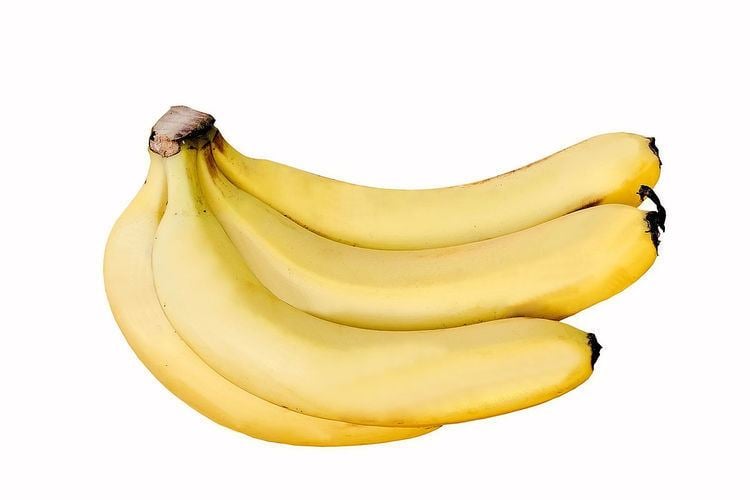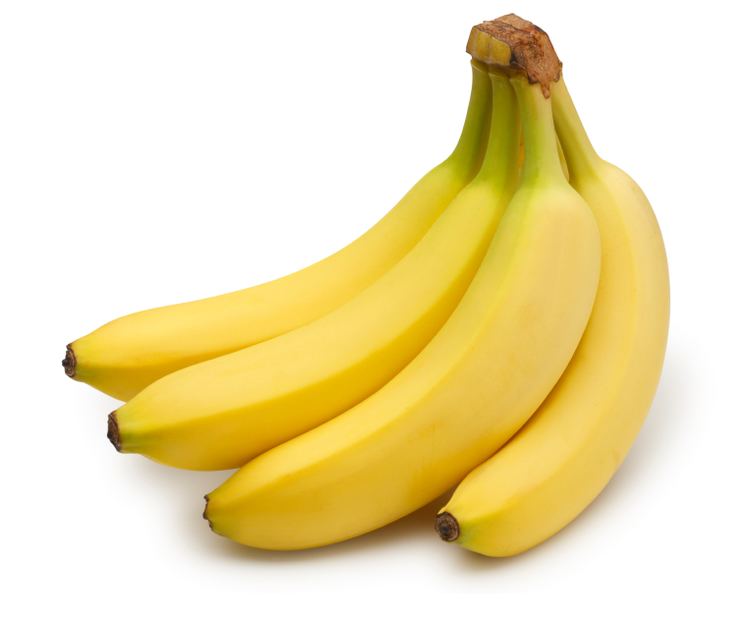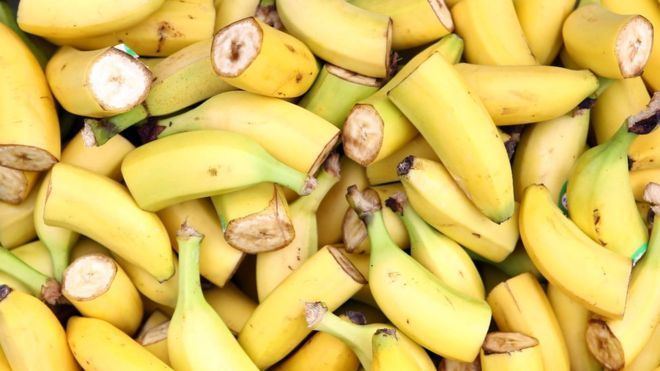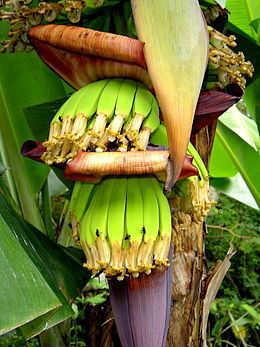Cultivar group members See text | ||
 | ||
Cultivar group Cavendish subgroup of the AAA Group Scientific name Musa acuminata Cavendish Subgroup Similar Gros Michel banana, Pisang Awak, Lady Finger banana, Banana, Musa acuminata | ||
Dwarf cavendish banana plant is starting to flower
A Cavendish banana is the fruit of a banana cultivar belonging to the Cavendish subgroup of the AAA cultivar group. The same term is also used to describe the plants on which the bananas grow.
Contents
- Dwarf cavendish banana plant is starting to flower
- Super dwarf cavendish banana plants
- History of cultivation
- Taxonomy and nomenclature
- Uses
- Diseases
- References

They include commercially important cultivars like 'Dwarf Cavendish' and 'Grand Nain'. Since the 1950s, these cultivars have been the most internationally traded bananas, replacing the Gros Michel banana after crops of the latter were devastated by Panama disease.

Super dwarf cavendish banana plants
History of cultivation

Cavendish bananas were named after William Cavendish, 6th Duke of Devonshire. Though they were not the first known banana specimens in Europe, in around 1834 Cavendish received a shipment of bananas (from Mauritius) courtesy of the chaplain of Alton Towers (then the seat of the Earls of Shrewsbury). His gardener, Sir Joseph Paxton cultivated them in the greenhouses of Chatsworth House. The plants were botanically described by Paxton as Musa cavendishii, after the Duke.

The Chatsworth bananas were shipped off to various places in the Pacific around the 1850s. It is believed that some of them may have ended up in the Canary Islands, though other authors believe that the bananas in the Canary Islands had been there since the fifteenth century and had been introduced through other means, namely by early Portuguese explorers who obtained them from West Africa and were later responsible for spreading them to the Caribbean. African bananas in turn were introduced from Southeast Asia into Madagascar by early Austronesian sailors. In 1888, bananas from the Canary Islands were imported into England by Thomas Fyffe. These bananas are now known to belong the Dwarf Cavendish cultivar.

Cavendish bananas entered mass commercial production in 1903 but did not gain prominence until later when Panama disease attacked the dominant Gros Michel ("Big Mike") variety in the 1950s. Because they were successfully grown in the same soils as previously affected Gros Michel plants, many assumed the Cavendish cultivars were more resistant to Panama disease. Contrary to this notion, in mid-2008, reports from Sumatra and Malaysia suggest that Panama disease is starting to attack Cavendish-like cultivars.
Taxonomy and nomenclature
Cavendish bananas are a subgroup of the triploid (AAA) cultivars of Musa acuminata.

Cavendish cultivars are distinguished by the height of the plant and features of the fruits, and different cultivars may be recognized as distinct by different authorities. The most important clones for fruit production include: 'Dwarf Cavendish', 'Grande Naine', 'Lacatan' (bungulan), 'Poyo', 'Valéry', and 'Williams' under one system of cultivar classification. Another classification includes: 'Double', 'Dwarf Cavendish', 'Extra Dwarf Cavendish', 'Grande Naine', 'Pisang Masak Hijau' (='Lacatan'), and 'Giant Cavendish' as a group of several difficult to distinguish cultivars (including 'Poyo', 'Robusta', 'Valéry', & 'Williams'). 'Grande Naine' is the most important clone in international trade, while 'Dwarf Cavendish' is the most widely grown clone. 'Grande Naine' is also known as Chiquita banana.
Uses
Cavendish bananas accounted for 47% of global banana production between 1998 and 2000, and the vast majority of bananas entering international trade.
The fruits of the Cavendish bananas are eaten raw, used in baking, fruit salads, fruit compotes, and to complement foods. The outer skin is partially green when sold in food markets, and turns yellow when it ripens. As it ripens the starches turn to sugar making a sweeter fruit. When it reaches its final stage (stage 7), brown/black "sugar spots" develop. When overripe, the skin turns black and the flesh becomes mushy. Bananas ripen naturally until they are picked. Once picked they no longer turn yellow on their own, and need to be gassed with ethylene gas to start up ripening again. Bananas which are turning yellow emit ethylene. Most retailers sell bananas in stages 3–6, with stage 4 being the most ideal. The PLUs used for Cavendish bananas are 4011 (yellow) and 4186 (small yellow). Organic Cavendish bananas are assigned PLU 94011. Due to their cylindrical shape, they are sometimes used in sexual education classes in order to demonstrate correct usage of a condom.
Diseases
Because cultivated bananas are propagated by conventional vegetative reproduction rather than through sexual reproduction, each of the Cavendish clones are genetically identical and evolve disease resistance more slowly.
